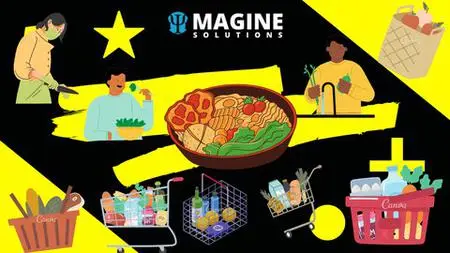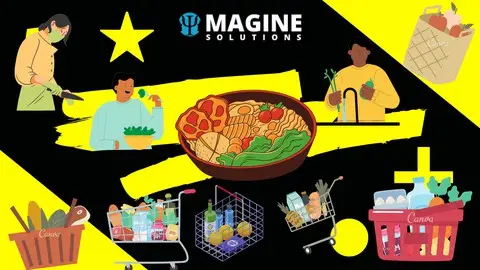Iso 22000:2018 Haccp Hazard Analysis Critical Control Point
Published 9/2022
MP4 | Video: h264, 1280x720 | Audio: AAC, 44.1 KHz
Language: English | Size: 1.23 GB | Duration: 1h 0m
Published 9/2022
MP4 | Video: h264, 1280x720 | Audio: AAC, 44.1 KHz
Language: English | Size: 1.23 GB | Duration: 1h 0m
Learn All About HACCP And Build The HACCP From Scratch For Your Own Organization Utilizing ISO 22000
What you'll learn
INTRODUCTION TO HACCP
TYPES OF FOOD SAFETY HAZARDS
ASSEMBLE THE HACCP TEAM
DESCRIBE THE PRODUCT
DESCRIBE THE INTENDED USE AND CONSUMERS
CREATE THE FLOW DIAGRAM
VERIFY THE FLOW DIAGRAM
Conduct Hazard Analysis
Establish Critical Limits
Establish Corrective Actions
Establish Verification Procedures
Establish Record Keeping and Documentation Procedures
Requirements
There Are No Requirements Necessary To Enroll. I Only Ask To Come Open-Minded And Ready To Learn.
Description
What is the connection between space exploration and the food in your pantry, on the grocery shelves, or the one you are eating? This is not a conspiracy. Want to know?The answer is… H-A-C-C-P. In this course, we will discover how space exploration not only pushed the limits of human knowledge but also opened the way that propelled the food industry to ensure food that is safe for consumption – anytime, anywhere, for everyone.HACCP stands for Hazard Analysis and Critical Control Points. It is a system widely used in the food manufacturing industry as a proactive and systematic tool to identify the potential risks and the critical control points (or CCP) in the ingredients, processes, and environment in the manufacturing of food. There are 12 steps involved in developing the HACCP Plan and this course will guide you in each step through comprehensive discussion and examples. Exam and self-paced activities test your understanding and practice as you learn the concepts.I am your guide in this course. My name is Johnathan Miller. I have been in the food industry for 10+ years and have an extensive experience in food safety management and HACCP development and implementation. After completing the course, you will be ready to create the HACCP Plan for your organization and contribute toward food safety.Enrolling in this course proves your commitment to food safety. I look forward to seeing you in this course and let us learn together!
Overview
Section 1: Introduction To HACCP
Lecture 1 Introduction To HACCP
Lecture 2 Course Activities Introduction
Section 2: Types of Food Safety Hazards
Lecture 3 Types of Food Safety Hazards
Section 3: Step 1: Assemble The HACCP Team
Lecture 4 Step 1: Assemble The HACCP Team
Section 4: Step 2: Describe The Product
Lecture 5 Step 2: Describe The Product
Section 5: Step 3: Describe The Intended Use And Consumers
Lecture 6 Step 3: Describe The Intended Use And Consumers
Section 6: Step 4: Create The Flow Diagram
Lecture 7 Step 4: Create The Flow Diagram
Section 7: Step 5: Verify The Flow Diagram
Lecture 8 Step 5: Verify The Flow Diagram
Section 8: Step 6: Conduct Hazard Analysis
Lecture 9 Step 6: Conduct Hazard Analysis
Section 9: Step 7: Determine Critical Control Points
Lecture 10 Step 7: Determine Critical Control Points
Section 10: STEP 8: Establish Critical Limits
Lecture 11 STEP 8: Establish Critical Limits
Section 11: STEP 9: Establish Monitoring Procedures
Lecture 12 STEP 9: Establish Monitoring Procedures
Section 12: STEP 10: Establish Corrective Actions
Lecture 13 STEP 10: Establish Corrective Actions
Section 13: STEP 11: Establish Verification Procedures
Lecture 14 STEP 11: Establish Verification Procedures
Section 14: STEP 12: Establish Record Keeping and Documentation Procedures
Lecture 15 STEP 12: Establish Record Keeping and Documentation Procedures
Section 15: Implementing HACCP
Lecture 16 Implementing HACCP
Section 16: Summary
Lecture 17 Summary
The Ideal Student For This Course Is Anyone Who Wants To Learn About HACCP Or An Existing Professional Who Wants To Expand On Their Current Skills.



